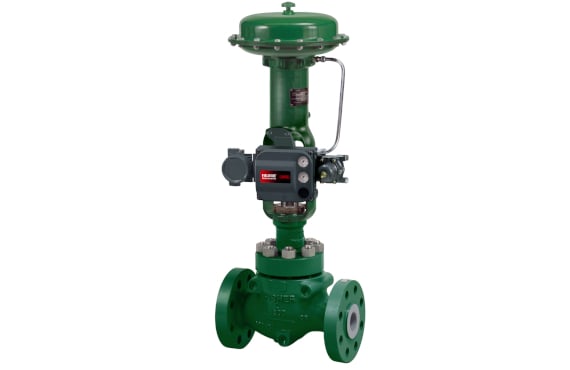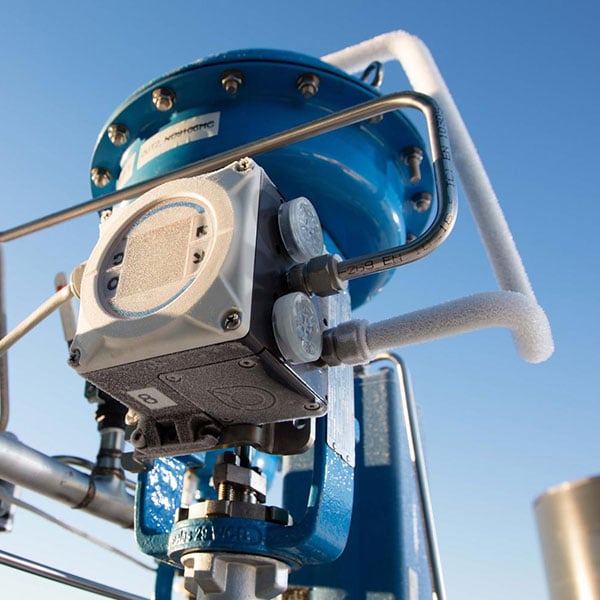Recognizing the Relevance of Control Valves in Process Automation
Wiki Article
Achieve Seamless Combination and Control With Top Quality Building Automation Controls
In the realm of modern-day building monitoring, the significance of high quality structure automation controls can not be overstated. As innovation remains to development, the integration and control of various systems within a structure have actually advanced to be more sophisticated and reliable. The smooth operation and surveillance of lights, COOLING AND HEATING, security, and various other building features have come to be critical for boosting owner comfort, power effectiveness, and overall operational effectiveness. The trip towards attaining real integration and control is a diverse one, with factors to consider varying from system compatibility to cybersecurity. Accepting high quality structure automation controls is not simply an issue of convenience yet a strategic essential for organizations aiming to optimize their centers' performance and sustainability.
Advancement of Building Automation Controls
Throughout the past couple of years, the evolution of constructing automation controls has dramatically transformed the method buildings are managed and run. Building automation systems mainly focused on standard features such as controlling air, ventilation, and home heating conditioning (COOLING AND HEATING) systems. However, as innovation advanced, these controls have become much more innovative, permitting a wider variety of building systems to be incorporated and taken care of centrally.The advancement of constructing automation controls has actually seen a change in the direction of more intelligent systems that can adjust to altering conditions in real-time. This adaptability is important for optimizing energy efficiency and ensuring resident convenience. Furthermore, contemporary building automation controls currently use functions such as anticipating upkeep, remote monitoring, and information analytics, allowing center managers to make data-driven choices to enhance building efficiency.

Advantages of High Quality Integration
The advancement in building automation manages towards even more smart systems has actually emphasized the substantial advantages of quality combination in enhancing structure operations and enhancing general efficiency. Quality integration of building automation controls offers several essential benefits. First of all, it results in boosted power effectiveness by allowing different systems to interact effortlessly, making certain optimum performance and reducing energy waste. Secondly, top quality integration improves occupant comfort and productivity by making it possible for customized control over ecological setups like air, lighting, and temperature level high quality. This personalization can result in an extra conducive and comfortable working or living atmosphere. Furthermore, high quality combination streamlines upkeep and fixing processes, as all systems are adjoined and can be kept an eye on and controlled from a centralized user interface. This centralized control also supplies far better exposure and understandings into building performance, making it possible for positive upkeep and optimization strategies. In general, the advantages of quality integration in structure automation controls are undeniable, offering increased efficiency, convenience, and functional effectiveness.Boosted Individual Experience and Ease Of Access
Enhancing user interaction with structure automation controls with user-friendly style and boosted ease of access elevates the overall experience for passengers and facility supervisors alike. By concentrating on individual experience, building automation systems can come to be a lot more effective and easy to use. Instinctive interfaces, clear navigation, and adjustable setups equip customers to connect with the controls easily and properly.Accessibility attributes play a crucial role in guaranteeing that all individuals, including those with handicaps, can utilize the structure automation controls with ease. Integrating functions such as voice commands, responsive switches, and color-contrasted displays can boost accessibility and make the controls much more comprehensive.
Additionally, enhanced user experience leads to higher individual contentment, enhanced efficiency, and far better decision-making. Residents can adjust environmental settings according to their choices, while facility supervisors can successfully check and take care of building systems - control valves. Overall, focusing on individual experience and accessibility in structure automation regulates contributes to a much more effective and seamless building setting for all stakeholders entailed
Lasting Practices Through Automation

Furthermore, automation can assist in the integration of eco-friendly power sources such as solar panels or wind generators into building operations. Via automation, structures can line up with modern-day sustainability objectives and contribute to a greener future.
Future Trends in Building Control Solution
In expectancy of progressing and advancing innovations sustainability methods, the trajectory of building control systems is poised to accept ingenious options and transformative approaches. browse around these guys One noticeable pattern forming the future of structure control systems is the enhanced integration of Artificial Knowledge (AI) and equipment discovering. These modern technologies make it possible for buildings to adapt in real-time to transforming conditions, enhancing power intake and enhancing convenience for occupants. In addition, the Net of Things (IoT) is changing building control systems by linking devices and sensing units to simplify procedures and improve efficiency.
One more crucial pattern is the focus on cybersecurity measures to shield against possible hazards to building automation systems. As buildings come to be extra interconnected, guaranteeing durable cybersecurity methods will certainly be important to secure delicate information and avoid unapproved gain access to.
Additionally, the change towards cloud-based systems is gaining energy, enabling for streamlined control and remote accessibility to building systems. This promotes much easier surveillance, maintenance, and updates, enhancing the overall efficiency and adaptability of building control systems. As modern technology remains to advancement, these patterns are expected to shape the future landscape of structure automation controls, driving technology and sustainability in the constructed environment.
Final Thought
Finally, developing automation controls have actually evolved considerably, using numerous benefits such as improved customer experience, availability, and sustainable techniques. Quality assimilation plays a vital role in achieving smooth control and efficient operation of find building systems. Future trends in building control systems are likely to concentrate on additional improving automation capacities for boosted energy performance and general efficiency. It is essential for structure owners and drivers to prioritize the fostering of high quality building automation controls to maximize structure procedures and attain lasting sustainability objectives.In the world of modern building administration, the significance of high quality structure automation controls can not be overemphasized. Generally, the advancement of building automation controls proceeds to drive advancement in the building management sector, using brand-new possibilities for creating smarter and more sustainable structures.
The development in structure automation manages towards even more smart systems has actually emphasized the substantial advantages of top quality combination in optimizing structure procedures and boosting total effectiveness. Generally, focusing on user experience and availability in structure automation manages contributes to a more efficient and seamless building setting for all stakeholders involved.
It is important for structure owners and drivers to focus on the adoption of high quality building automation regulates to optimize structure operations and accomplish lasting sustainability objectives. - control valves
Report this wiki page